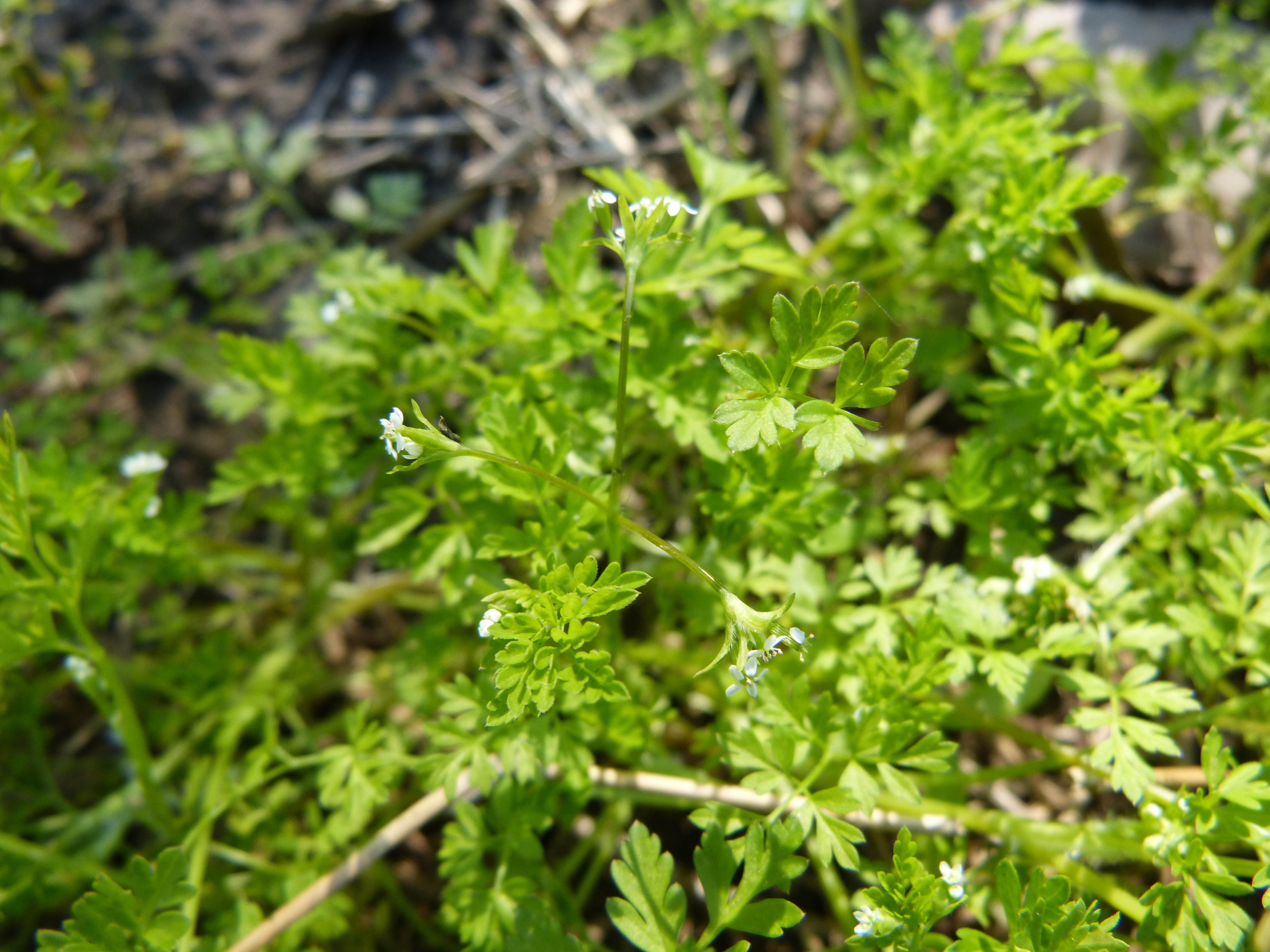Map Snapshot








37 Records
Seasonality Snapshot
Source: Wikipedia
| Chaerophyllum procumbens | |
|---|---|

| |
| Scientific classification | |
| Kingdom: | Plantae |
| Clade: | Tracheophytes |
| Clade: | Angiosperms |
| Clade: | Eudicots |
| Clade: | Asterids |
| Order: | Apiales |
| Family: | Apiaceae |
| Genus: | Chaerophyllum |
| Species: | C. procumbens
|
| Binomial name | |
| Chaerophyllum procumbens | |
| Synonyms[1] | |
|
Chaerophyllum articulatum Bosc ex DC. | |
Chaerophyllum procumbens, known by the common names spreading chervil[2] and wild chervil,[3] is an annual forb native to the eastern United States and Canada,[2] which produces small white flowers in spring.
Description
[edit]
Chaerophyllum procumbens is 15 to 50 centimeters tall. Several slender branching stems emerge from the base of the plant. The stems are shiny, but have a line of fine hairs running up them. The mostly hairless triangular compound leaves are doubly pinnate, with leaflets that are themselves pinnatifid. The lower leaves are borne on petioles, the upper leaves are smaller and nearly sessile. The upper stems terminate in compound umbels consisting of approximately 2 to 6 umbellets, each with 1 to 7 small white flowers with 5 petals. The flowers often bloom before the umbels have fully expanded. The fruit is an oblong capsule, 4 to 6 millimeters long, with longitudinal ridges.[3][4]
Distribution and habitat
[edit]Chaerophyllum procumbens is widely distributed in the eastern United States, although local distribution may be spotty. It has been recorded in Alabama, Arkansas, Washington, D.C., Delaware, Florida, Georgia, Iowa, Illinois, Indiana, Kansas, Kentucky, Maryland, Michigan, Missouri, Mississippi, North Carolina, Nebraska, New Jersey, New York, Ohio, Oklahoma, Pennsylvania, South Carolina, Tennessee, Virginia, Wisconsin, and West Virginia. It has also been recorded in the Canadian province of Ontario. Chaerophyllum procumbens is listed as an endangered species by the state of New York.[2] In Virginia, it grows in habitats including floodplain forests and alluvial clearings.[5] The presence of this species is dependent on appropriate habitat, and it may be eliminated from an area by development, changes in land use, or competition with invasive species.
References
[edit]- ^ "Chaerophyllum procumbens (L.) Crantz - The Plant List". Retrieved January 26, 2014. The Plant List (2013). Version 1.1. Published on the Internet; http://www.theplantlist.org/
- ^ a b c "Plants Profile for Chaerophyllum procumbens (spreading chervil)". Retrieved January 26, 2014. USDA, NRCS. 2014. The PLANTS Database (http://plants.usda.gov)[permanent dead link]. National Plant Data Team, Greensboro, NC 27401-4901 USA.
- ^ a b "Wild Chervil (Chaerophyllum procumbens)". Retrieved February 8, 2014. Copyright © 2002-2012 John Hilty. Illinois Wildflowers (http://www.illinoiswildflowers.info)
- ^ Britton, Nathaniel Lord & Brown, Addison (1913). An Illustrated Flora of the Northern United States, Canada and the British Possessions: From Newfoundland to the Parallel of the Southern Boundary of Virginia, and from the Atlantic Ocean Westward to the 102d Meridian, Volume 3., p. 629. Charles Scribner's Sons, New York.
- ^ "Digital Atlas of the Virginia Flora | Chaerophyllum procumbens (L.) Crantz var. procumbens". Retrieved January 26, 2014. Virginia Botanical Associates. (2014). Digital Atlas of the Virginia Flora (http://www.vaplantatlas.org)[permanent dead link]. c/o Virginia Botanical Associates, Blacksburg.


